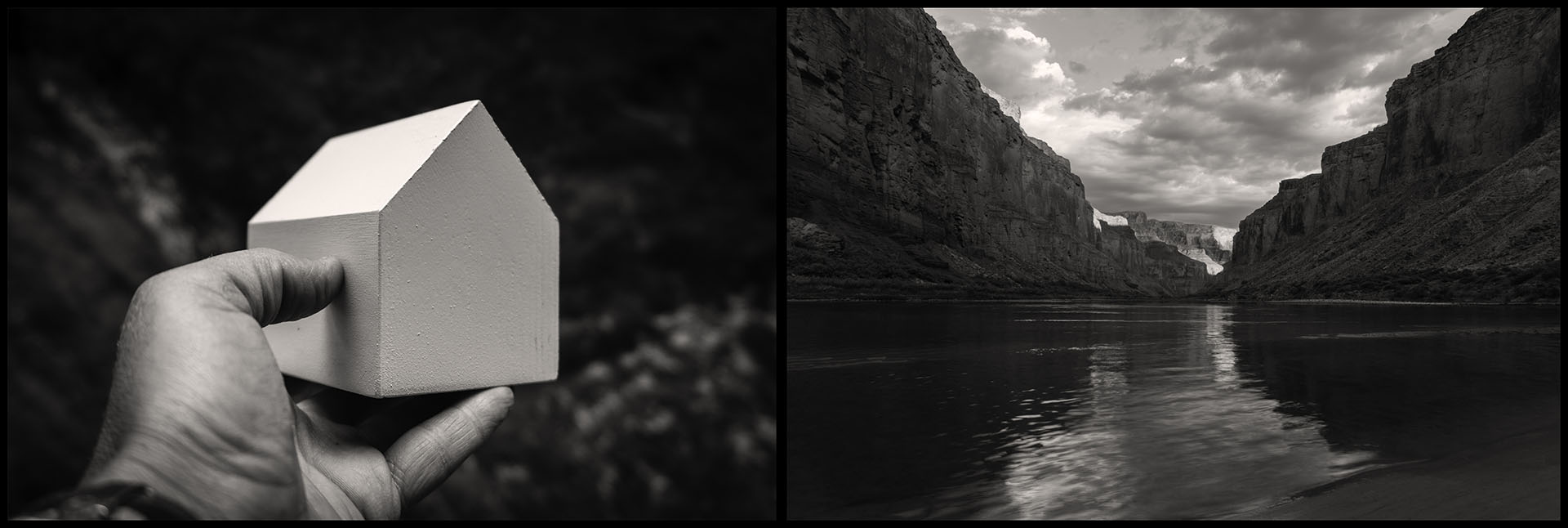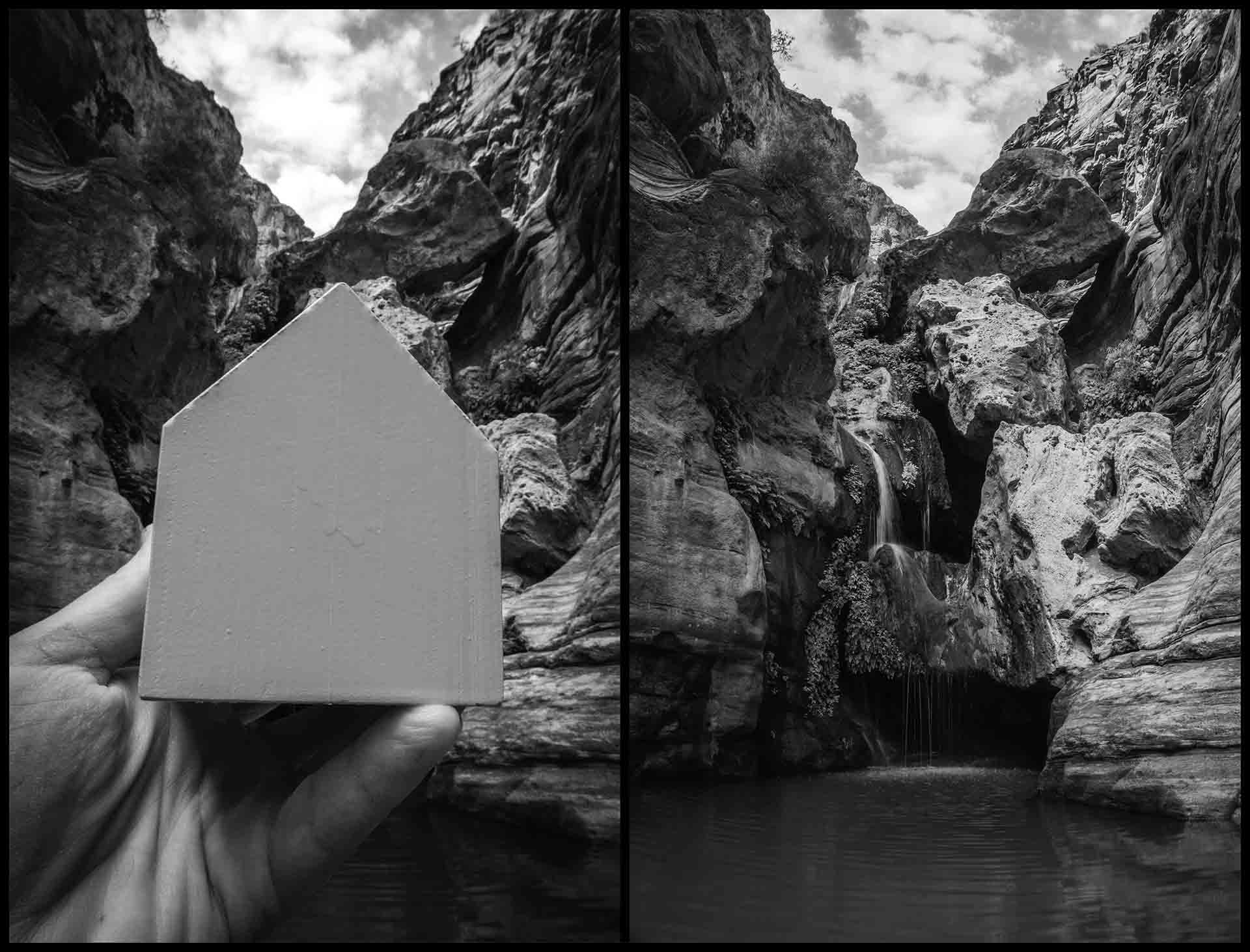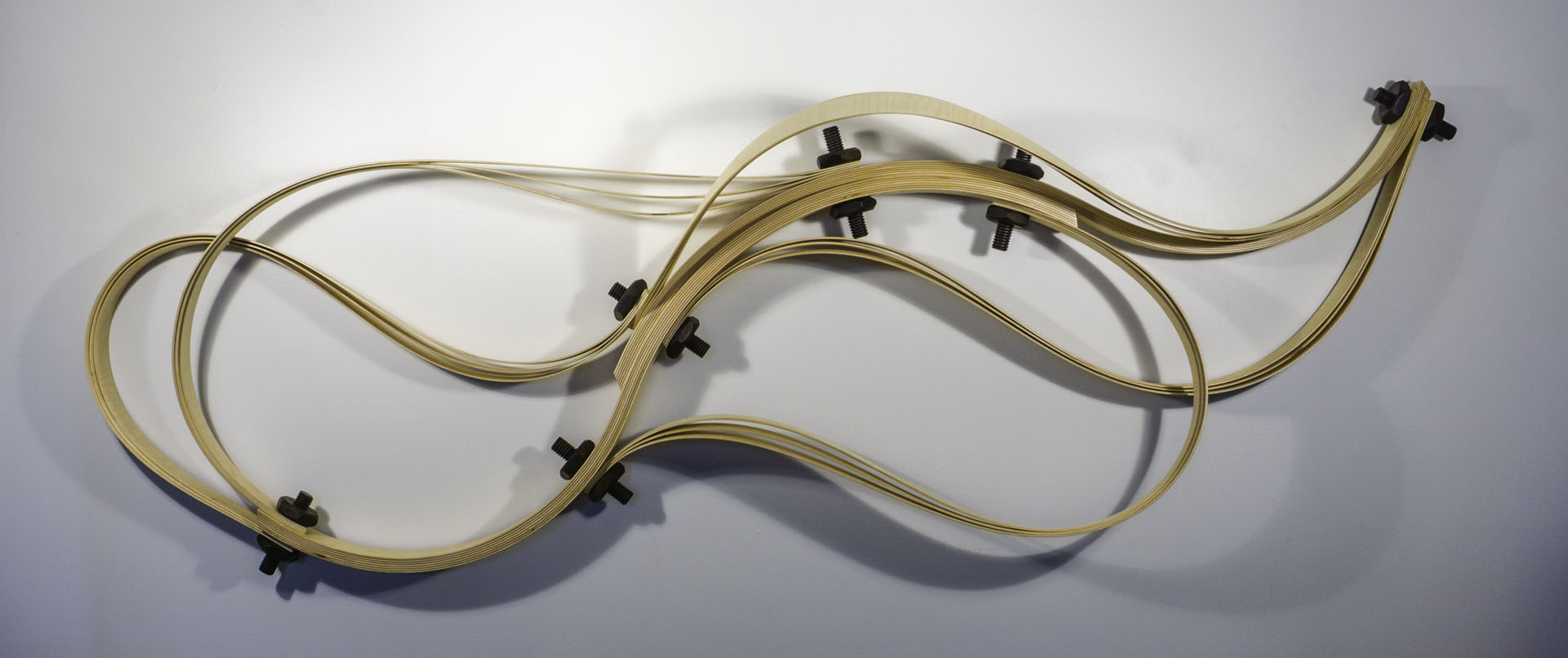
Nankoweep, Mile 53.5 (Prospective Home Sites, Grand Canyon National Park)
Kerstin Dale, 2015
Archival pigment print, 15″ x 48.5″
Image © 2015, courtesy of the artist

Elves Chasm, Mile 117.5 (Prospective Home Sites, Grand Canyon National Park)
Kerstin Dale, 2015
Archival pigment print, 23″ x 31″
Image © 2015, courtesy of the artist

Around Saddle Canyon
Kerstin Dale, 2015
Baltic birch plywood, walnut, 41″h x 84″w x 7″d
Image © 2015, courtesy of the artist
About the Artist
In her photographs and plywood sculptures, Kerstin Dale draws inspiration from the canyonlands and desert landscapes of the Southwestern United States. She portrays the pervasive reaction of our society to pristine natural areas — the desire to erect houses, visitor centers and transverse highways atop them. In her series entitled, “Prospective Home Sites,” Dale juxtaposes model houses and unspoiled sections of the Colorado River along the Grand Canyon, inviting us to wonder about the limits of our building footprint. In her plywood series, she recreates the contours of Southwestern landscapes, rendering them in plywood sculptures that resemble a network of highway ramps. In these works, Dale reminds us that the way to celebrate pristine natural areas is to preserve them for current and future generations rather than planting our flags in them for all to see.
Explore These Artworks
In the artist’s words:
Prospective Home Sites series: “By juxtaposing images representing development and images of pristine landscapes, this series explores issues of water scarcity amidst increasing demand, and the resulting human impact on the Grand Canyon’s Colorado River. Over a period of years and dozens of trips through the Canyon, I photographed wooden structures in absurd places—beautiful spots along the river, completely inaccessible to such development. Covering 278 miles of the Colorado River in Grand Canyon, the series is meant to portray the pervasiveness of human impact by exaggerating the proximity of development. If the Colorado River is to supply water to 40 million people downstream, why not just erect homes right there on its banks? The structures, uniform in rudimentary shape and color, are reminiscent of Monopoly game pieces—houses and hotels—representing human hunger for ownership, an ever-encroaching civilization, and gross imposition on wild places. By using the mile indicators along the river as the title of each piece, I intend to further emphasize this encroachment, asking the viewer to imagine a home site here, and here, and here.”
Plywood series: “Through the gentle manipulation of high-grade plywood, and cutting the wood in such a way that it naturally separates into its layers, I construct intricate representations of Desert Southwest environments. From the horizontal lines of the Painted Desert to the bottom of the Grand Canyon where the Colorado constantly carves rock, this series is an aesthetic exploration of the landscape I call home. Each element of every piece is hand-constructed from wood. Even the nuts and bolts, which appear in the photographs to be metal, are hand-made from wood, and then dyed black, or left as natural wood. Interpreted by viewers as anything from musical instruments to ancient tools to children’s toys, each of the products in the Plywood Series can be traced back to its source—a specific spot on the river or Southwest landscape. Each twist, bend, layer and shade are reflections of the precious, diverse and imperiled land. I see this series as having dual purpose: to honor and celebrate the wild land each piece explores, and to inspire the continued vigilance and dedication of preservation efforts.”
Inthis article in the LA Times, learn about development plans for the Grand Canyon that were rejected by the U.S. Government on environmental grounds.
In their work, Kerstin Dale and Eric Brennan each depict the role of humanity in transforming natural landscapes into the built environment. Although their aesthetic styles differ significantly, they use the same visual element to make the connection a direct and literal one; both artists portray the human hand as the agent of change in the landscape.
- Featured Action:* Use sustainable building products!
* Your pledge will be counted in Earth Day Network’s “A Billion Acts of Green” campaign. Learn more about this campaignhere.
Reserved for future conversations.











